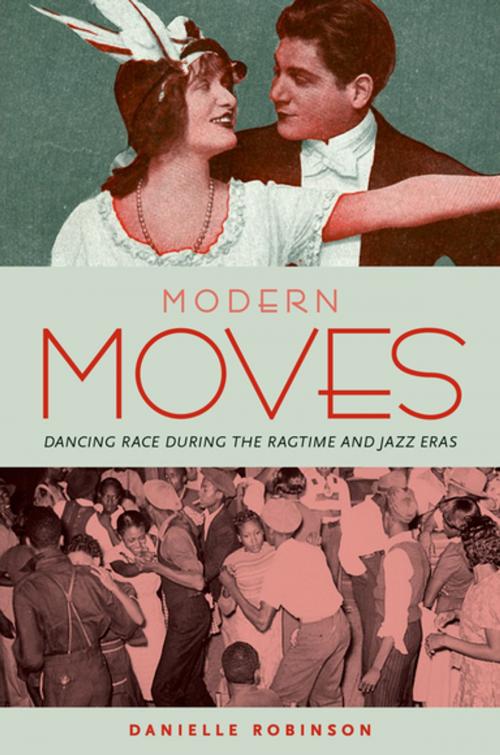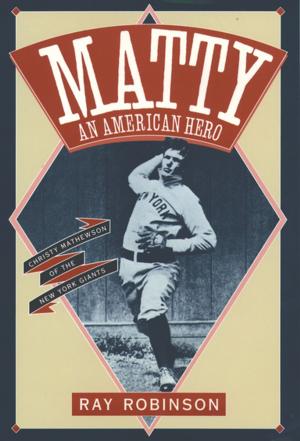Modern Moves
Dancing Race during the Ragtime and Jazz Eras
Nonfiction, Entertainment, Music, Theory & Criticism, History & Criticism, Reference, Performing Arts| Author: | Danielle Robinson | ISBN: | 9780190466046 |
| Publisher: | Oxford University Press | Publication: | July 29, 2015 |
| Imprint: | Oxford University Press | Language: | English |
| Author: | Danielle Robinson |
| ISBN: | 9780190466046 |
| Publisher: | Oxford University Press |
| Publication: | July 29, 2015 |
| Imprint: | Oxford University Press |
| Language: | English |
Modern Moves traces the movement of American social dance styles between black and white cultural groups and between immigrant and migrant communities during the early twentieth century. Its central focus is New York City, where the confluence of two key demographic streams - an influx of immigrants from Eastern Europe and the growth of the city's African American community particularly as it centered Harlem - created the conditions of possibility for hybrid dance forms like blues, ragtime, ballroom, and jazz dancing. Author Danielle Robinson illustrates how each of these forms came about as the result of the co-mingling of dance traditions from different cultural and racial backgrounds in the same urban social spaces. The results of these cross-cultural collisions in New York City, as she argues, were far greater than passing dance trends; they in fact laid the foundation for the twentieth century's social dancing practices throughout the United States. By looking at dance as social practice across conventional genre and race lines, this book demonstrates that modern social dancing, like Western modernity itself, was dependent on the cultural production and labor of African diasporic peoples -- even as they were excluded from its rewards. A cornerstone in Robinson's argument is the changing role of the dance instructor, which was transformed from the proprietor of a small-scale, local dance school at the end of the nineteenth century to a member of a distinct, self-identified social industry at the beginning of the twentieth. Whereas dance studies has been slow to connect early twentieth century dancing with period racial politics, Modern Moves departs radically from prior scholarship on the topic, and in so doing, revises social and African American dance history of this period. Recognizing the rac(ial)ist beginnings of contemporary American social dancing, it offers a window into the ways that dancing throughout the twentieth century has provided a key means through which diverse groups of people have navigated shifting socio-political relations through their bodily movement. Modern Moves asserts that the social practice of modern dancing, with its perceived black origins, empowered displaced people such as migrants and immigrants to grapple with the effects of industrialization, urbanization, and the rise of North American modernity. Far more than simple appropriation, the selling and practicing of "black" dances during the 1910s and 1920s reinforced whiteness as the ideal racial status in America through embodied and rhetorical engagements with period black stereotypes.
Modern Moves traces the movement of American social dance styles between black and white cultural groups and between immigrant and migrant communities during the early twentieth century. Its central focus is New York City, where the confluence of two key demographic streams - an influx of immigrants from Eastern Europe and the growth of the city's African American community particularly as it centered Harlem - created the conditions of possibility for hybrid dance forms like blues, ragtime, ballroom, and jazz dancing. Author Danielle Robinson illustrates how each of these forms came about as the result of the co-mingling of dance traditions from different cultural and racial backgrounds in the same urban social spaces. The results of these cross-cultural collisions in New York City, as she argues, were far greater than passing dance trends; they in fact laid the foundation for the twentieth century's social dancing practices throughout the United States. By looking at dance as social practice across conventional genre and race lines, this book demonstrates that modern social dancing, like Western modernity itself, was dependent on the cultural production and labor of African diasporic peoples -- even as they were excluded from its rewards. A cornerstone in Robinson's argument is the changing role of the dance instructor, which was transformed from the proprietor of a small-scale, local dance school at the end of the nineteenth century to a member of a distinct, self-identified social industry at the beginning of the twentieth. Whereas dance studies has been slow to connect early twentieth century dancing with period racial politics, Modern Moves departs radically from prior scholarship on the topic, and in so doing, revises social and African American dance history of this period. Recognizing the rac(ial)ist beginnings of contemporary American social dancing, it offers a window into the ways that dancing throughout the twentieth century has provided a key means through which diverse groups of people have navigated shifting socio-political relations through their bodily movement. Modern Moves asserts that the social practice of modern dancing, with its perceived black origins, empowered displaced people such as migrants and immigrants to grapple with the effects of industrialization, urbanization, and the rise of North American modernity. Far more than simple appropriation, the selling and practicing of "black" dances during the 1910s and 1920s reinforced whiteness as the ideal racial status in America through embodied and rhetorical engagements with period black stereotypes.















